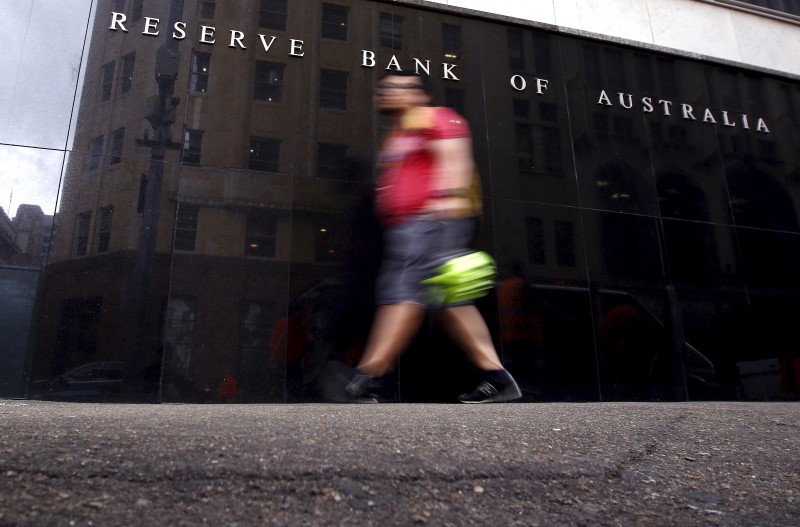By Swati Pandey
SYDNEY (Reuters) - Australia's central bank held rates steady on Tuesday, a widely expected decision given policymakers recently signaled a steady outlook for much of the year ahead.
The central bank kept rates at a record low of 1.5 percent for an eighth straight month, following easings in August and May last year. All 67 economists in a Reuters poll expected a steady outcome this week.
The Australian dollar <AUD=D4> inched higher after the rate decision, supported by the outlook for steady policy. It was last up 0.5 percent at $0.7619 after dropping to a more than one-month low of $0.7598 this week.
"Today's RBA statement reveals a central bank pleased with both the improving global backdrop and the transition of the Australian economy to better growth and stronger employment," said Scott Haslem, economist at UBS.
Haslem expects the RBA to stay pat until the middle of 2018 as it balances disinflationary forces such as record low wage growth and heightened retail competition with sky-rocketing house prices.
Governor Philip Lowe has repeatedly emphasized limits to monetary policy and last month said further cuts in interest rates would not be in the national interest as the danger of a debt-fueled boom and bust was just too severe.
With the governor signaling a high bar for a move lower, interbank futures <0#YIB:> imply a mere 6 percent chance of another cut by August.
On Tuesday, Lowe maintained his upbeat tone as Australia's A$1.7 trillion ($1.3 trillion) economy expanded 2.4 percent in 2016 helped by a jump in commodity prices and stronger consumer spending.
"Exports have risen strongly and non-mining business investment has risen over the past year," Lowe said.
"Most measures of business and consumer confidence are at, or above, average."
He also reiterated the central bank's forecasts for a gradual pick-up in underlying inflation, which is pinned at a record low of 1.5 percent.
BUSINESS CONFIDENCE
A survey of business expectations by Dun & Bradstreet (NYSE:DNB) on Tuesday found business confidence was at an 18-month high while plans for capital investments for the second quarter of 2017 were at a two-year peak.
"The critical issue will be whether this optimism translates to a lift in actual activity," said Stephen Koukoulas, Dun & Bradstreet economic adviser.
So far, there has been little evidence of that with both businesses and households crimping on overall spending.
Data out recently showed retail sales grew at a tepid pace for a third straight month while the outlook for capital expenditure remained uninspiring.
Lowe also retained his concerns about record low wage growth and a tardy labor market with jobs heavily skewed toward part-time work.
He is also worried about the high levels of household debt, with the ratio of household debt to disposable income at an all-time peak around 180 percent.
"The bank is concerned that a further cut in interest rates could induce some households to borrow beyond their means. The bank is thus prioritizing its concerns about household balance sheets at this point," said NAB's chief economist Ivan Colhoun.
($1 = 1.3149 Australian dollars)
